Table of Contents
Foreword
Preface
Audience
How This Book Is Organized
Supporting Books
Conventions Used in This Book
Code Examples
Safari® Books Online
How to Contact Us
Acknowledgments
Chapter 1. Introduction to Data Analysis with Spark
What Is Apache Spark?
A Unified Stack
Spark Core
Spark SQL
Spark Streaming
MLlib
GraphX
Cluster Managers
Who Uses Spark, and for What?
Data Science Tasks
Data Processing Applications
A Brief History of Spark
Spark Versions and Releases
Storage Layers for Spark
Chapter 2. Downloading Spark and Getting Started
Downloading Spark
Introduction to Spark’s Python and Scala Shells
Introduction to Core Spark Concepts
Standalone Applications
Initializing a SparkContext
Building Standalone Applications
Conclusion
Chapter 3. Programming with RDDs
RDD Basics
Creating RDDs
RDD Operations
Transformations
Actions
Lazy Evaluation
Passing Functions to Spark
Python
Scala
Java
Common Transformations and Actions
Basic RDDs
Converting Between RDD Types
Persistence (Caching)
Conclusion
Chapter 4. Working with Key/Value Pairs
Motivation
Creating Pair RDDs
Transformations on Pair RDDs
Aggregations
Grouping Data
Joins
Sorting Data
Actions Available on Pair RDDs
Data Partitioning (Advanced)
Determining an RDD’s Partitioner
Operations That Benefit from Partitioning
Operations That Affect Partitioning
Example: PageRank
Custom Partitioners
Conclusion
Chapter 5. Loading and Saving Your Data
Motivation
File Formats
Text Files
JSON
Comma-Separated Values and Tab-Separated Values
SequenceFiles
Object Files
Hadoop Input and Output Formats
File Compression
Filesystems
Local/“Regular” FS
Amazon S3
HDFS
Structured Data with Spark SQL
Apache Hive
JSON
Databases
Java Database Connectivity
Cassandra
HBase
Elasticsearch
Conclusion
Chapter 6. Advanced Spark Programming
Introduction
Accumulators
Accumulators and Fault Tolerance
Custom Accumulators
Broadcast Variables
Optimizing Broadcasts
Working on a Per-Partition Basis
Piping to External Programs
Numeric RDD Operations
Conclusion
Chapter 7. Running on a Cluster
Introduction
Spark Runtime Architecture
The Driver
Executors
Cluster Manager
Launching a Program
Summary
Deploying Applications with spark-submit
Packaging Your Code and Dependencies
A Java Spark Application Built with Maven
A Scala Spark Application Built with sbt
Dependency Conflicts
Scheduling Within and Between Spark Applications
Cluster Managers
Standalone Cluster Manager
Hadoop YARN
Apache Mesos
Amazon EC2
Which Cluster Manager to Use?
Conclusion
Chapter 8. Tuning and Debugging Spark
Configuring Spark with SparkConf
Components of Execution: Jobs, Tasks, and Stages
Finding Information
Spark Web UI
Driver and Executor Logs
Key Performance Considerations
Level of Parallelism
Serialization Format
Memory Management
Hardware Provisioning
Conclusion
Chapter 9. Spark SQL
Linking with Spark SQL
Using Spark SQL in Applications
Initializing Spark SQL
Basic Query Example
SchemaRDDs
Caching
Loading and Saving Data
Apache Hive
Parquet
JSON
From RDDs
JDBC/ODBC Server
Working with Beeline
Long-Lived Tables and Queries
User-Defined Functions
Spark SQL UDFs
Hive UDFs
Spark SQL Performance
Performance Tuning Options
Conclusion
Chapter 10. Spark Streaming
A Simple Example
Architecture and Abstraction
Transformations
Stateless Transformations
Stateful Transformations
Output Operations
Input Sources
Core Sources
Additional Sources
Multiple Sources and Cluster Sizing
24/7 Operation
Checkpointing
Driver Fault Tolerance
Worker Fault Tolerance
Receiver Fault Tolerance
Processing Guarantees
Streaming UI
Performance Considerations
Batch and Window Sizes
Level of Parallelism
Garbage Collection and Memory Usage
Conclusion
Chapter 11. Machine Learning with MLlib
Overview
System Requirements
Machine Learning Basics
Example: Spam Classification
Data Types
Working with Vectors
Algorithms
Feature Extraction
Statistics
Classification and Regression
Clustering
Collaborative Filtering and Recommendation
Dimensionality Reduction
Model Evaluation
Tips and Performance Considerations
Preparing Features
Configuring Algorithms
Caching RDDs to Reuse
Recognizing Sparsity
Level of Parallelism
Pipeline API
Conclusion
Index
About the Authors
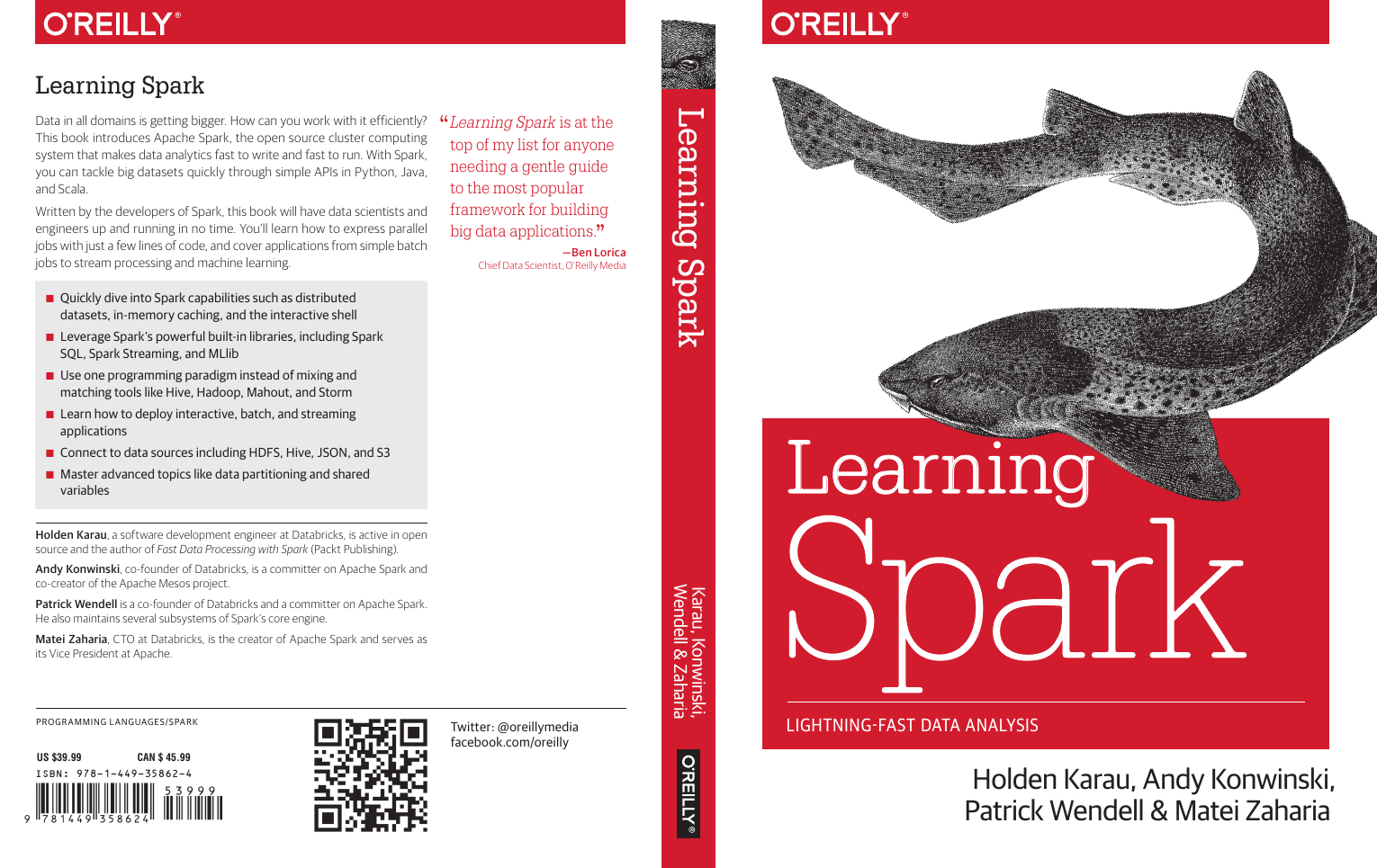
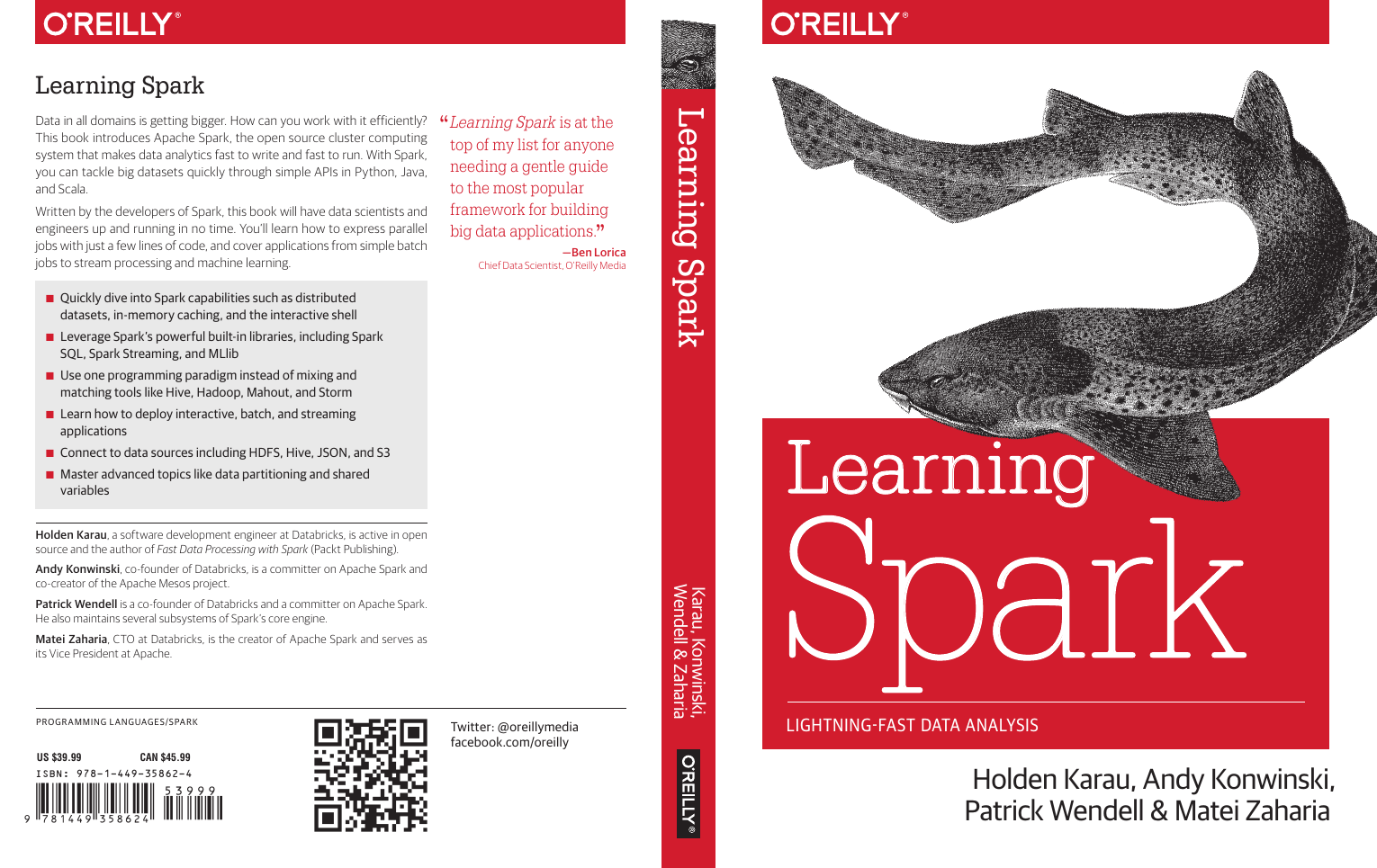
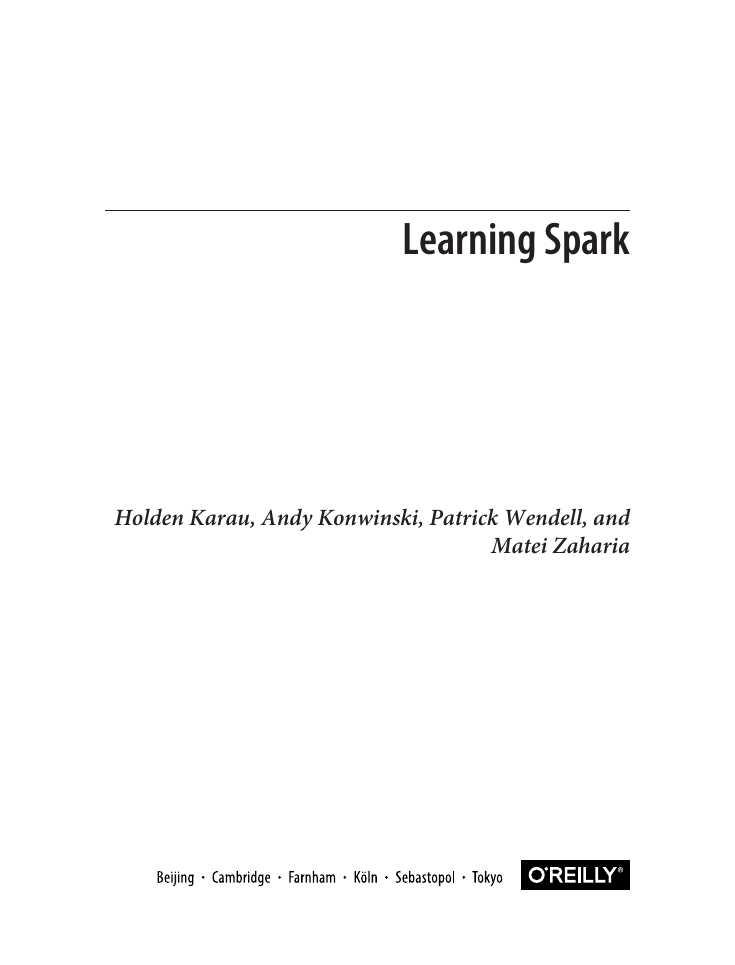
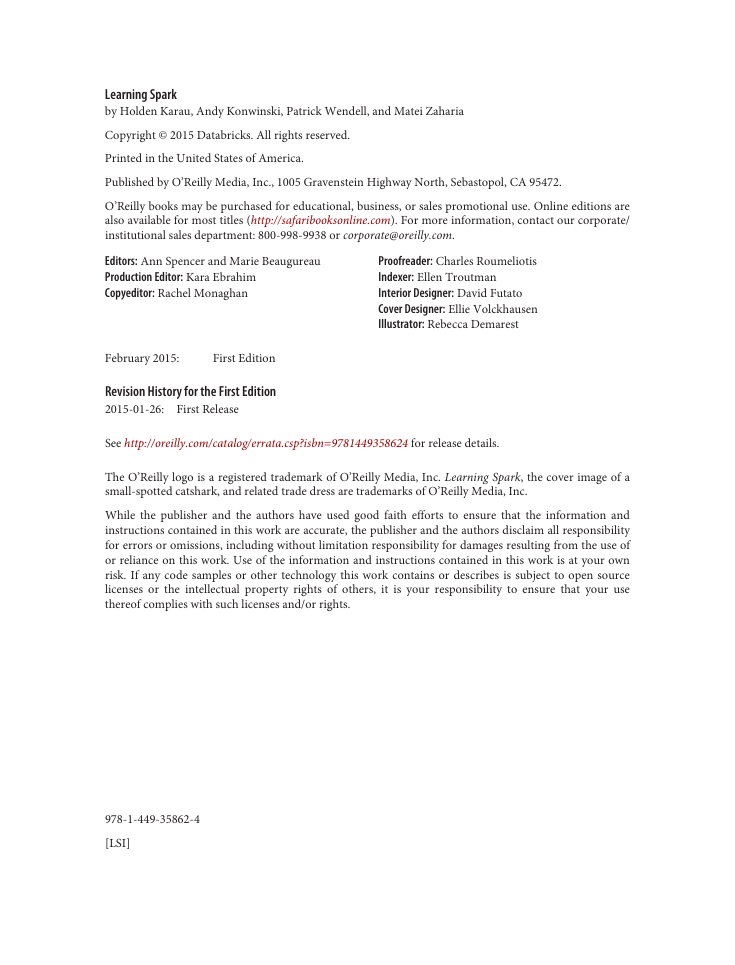
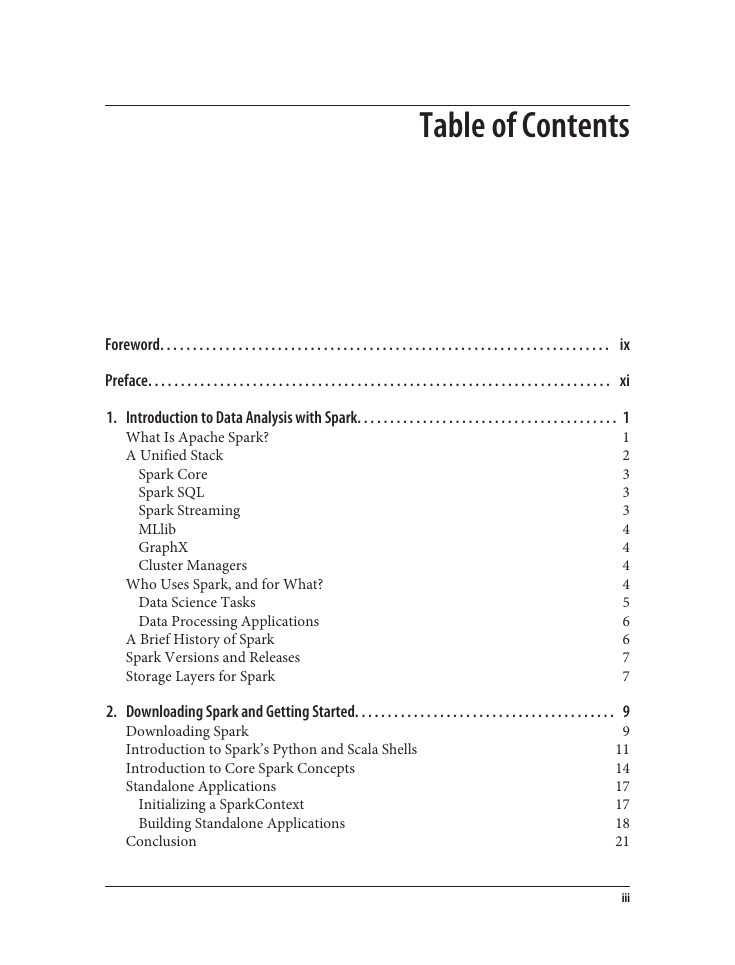
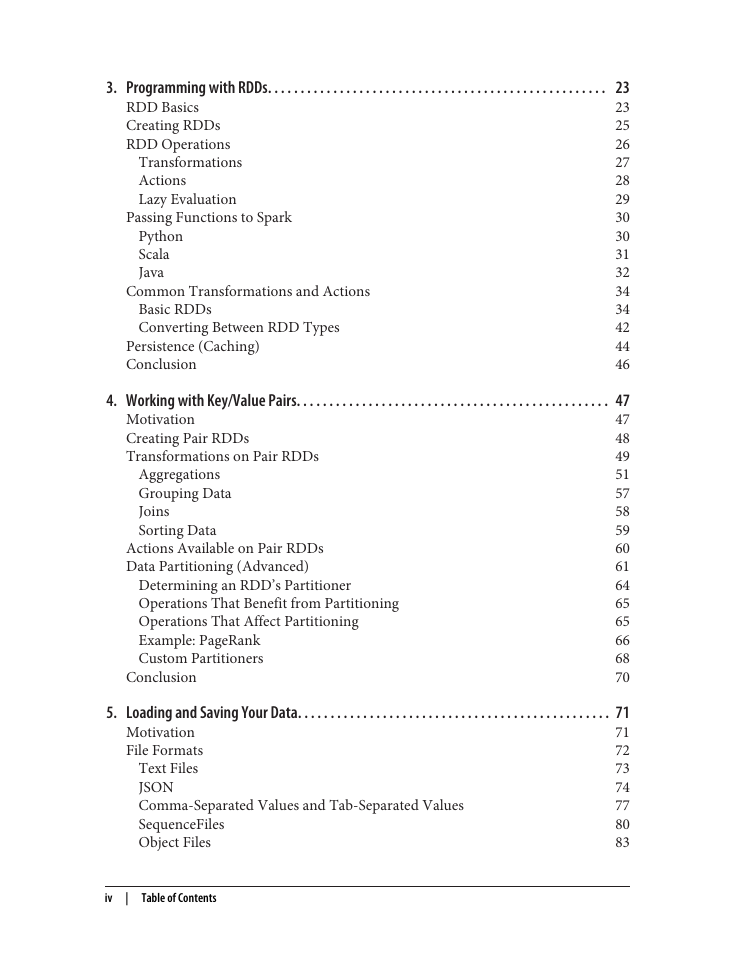
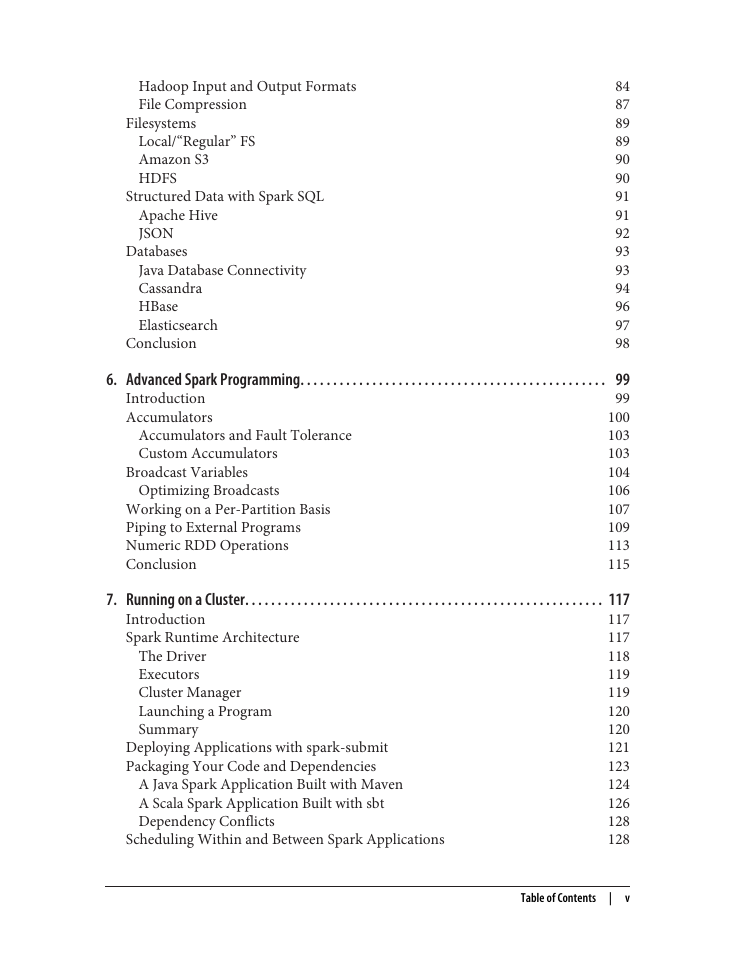
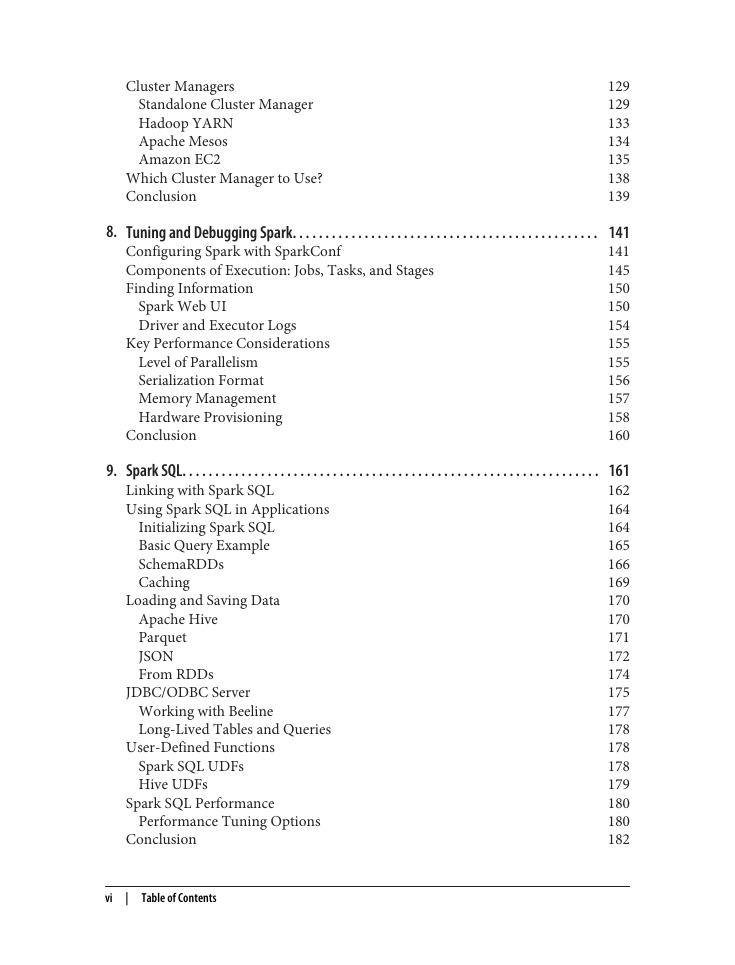








 2023年江西萍乡中考道德与法治真题及答案.doc
2023年江西萍乡中考道德与法治真题及答案.doc 2012年重庆南川中考生物真题及答案.doc
2012年重庆南川中考生物真题及答案.doc 2013年江西师范大学地理学综合及文艺理论基础考研真题.doc
2013年江西师范大学地理学综合及文艺理论基础考研真题.doc 2020年四川甘孜小升初语文真题及答案I卷.doc
2020年四川甘孜小升初语文真题及答案I卷.doc 2020年注册岩土工程师专业基础考试真题及答案.doc
2020年注册岩土工程师专业基础考试真题及答案.doc 2023-2024学年福建省厦门市九年级上学期数学月考试题及答案.doc
2023-2024学年福建省厦门市九年级上学期数学月考试题及答案.doc 2021-2022学年辽宁省沈阳市大东区九年级上学期语文期末试题及答案.doc
2021-2022学年辽宁省沈阳市大东区九年级上学期语文期末试题及答案.doc 2022-2023学年北京东城区初三第一学期物理期末试卷及答案.doc
2022-2023学年北京东城区初三第一学期物理期末试卷及答案.doc 2018上半年江西教师资格初中地理学科知识与教学能力真题及答案.doc
2018上半年江西教师资格初中地理学科知识与教学能力真题及答案.doc 2012年河北国家公务员申论考试真题及答案-省级.doc
2012年河北国家公务员申论考试真题及答案-省级.doc 2020-2021学年江苏省扬州市江都区邵樊片九年级上学期数学第一次质量检测试题及答案.doc
2020-2021学年江苏省扬州市江都区邵樊片九年级上学期数学第一次质量检测试题及答案.doc 2022下半年黑龙江教师资格证中学综合素质真题及答案.doc
2022下半年黑龙江教师资格证中学综合素质真题及答案.doc